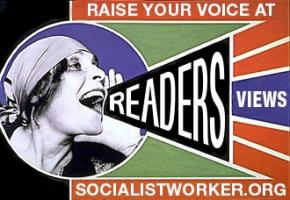Hair metal or Deadheads
UPON HEARING the news that the Socialism 2016 event space in Chicago earlier this month would be shared with Guns N' Roses fans attending the reunion tour at nearby Soldier Field, almost everyone that I talked to thought it would at least be an odd mix of people, and at worst create a situation where conflict could occur. With the memory of tensions between last year's conference-goers and Grateful Dead fans attending a series of concerts, I arrived feeling a bit odd around the Guns N' Roses T-shirts and fans.
But absolutely nothing happened. Everyone reported having at least pleasant interactions with the GnR crowd. But I wondered why this was so. Is Guns N' Roses not the wild and reactionary hair band of the 1980s I thought it was? Are hair metal fans not all aging white suburban dads? Why wasn't the aging cult around the Grateful Dead more excited to see us the year before?
Going back to the 1970s, when glam and hair metal first began to develop, the reality of its early history defies the modern collective memory of how it developed. The two hubs of glam in America were New York City and Los Angles, which were at the time in the grips of urban decline and poverty.
Kiss frontman Gene Simmons moved from Israel to Queens, New York, when he was eight and described his family as "dirt poor" and "scraping by on bread and milk." The mother of Guns N' Roses' singer Axl Rose gave birth to him when she was 16 and still in high school. She kicked out his 20-year-old father two years later, and Axl described his adopted father as abusive to him, his siblings and his mother.
It seems that hair metal and glam rock were rebellions against authority and a way to combat the combination of boredom and declining social status that characterized urban life of this time.
The fact that working-class people formed bands to vent this alienation was not in any way unique, and didn't set them apart from the Grateful Dead's founding members, who mainly did come from suburban families. The more unique thing was that bands like Guns N' Roses were generally apolitical, unlike the previous generation of bands that grew out of the counterculture movement of the 1960s, and before that the civil rights movement of the 1950s.
Even more strange is the fact that many members of bands like these would become vocal conservatives as time went on, ranging from the not incredibly pleasant and conservative business attitude of Gene Simmons to the alarming and blankly odd racism of Ted Nugent.
In a way, the politics of the late 1970s and 1980s could maybe provide an answer, but it's still extremely confusing. By the late 1970s, Carter had dragged Democratic Party politics rightward, and the white working class was in search of a party that vaguely pretended to care about them. Republicans were entirely aware of this and used this disenfranchisement to draw working-class whites into the fold of the New Right, in opposition to the gains of the 1960s and 1970s civil rights and Black Power movement.
The other obvious contradiction is the absorption of the hair scene into the commercial music industry as part of the rise of MTV. Today, the trend continues, with classic rock still playing a key part in the radio and music industry.
But today, the classic rock genre has been transformed by the fact that its primary fan base is now in its 40s and 50s and has moved up the income ladder. The average classic rock radio listener has a household income of $50,000 and is 38 percent more likely to be involved in blue-collar work than the general adult radio market.
For the July 2016 concert of Guns N' Roses, the starting price for tickets was $30, and after the shows sold out, the secondary market averaged around $180 to $200. By contrast, the starting price for the Grateful Dead show in July 2015 was $60, and after the shows sold out, tickets went for $2,000 on the secondary market.
These fans probably were not the blue-collar fans of classic rock, and instead more likely to be educated professionals or the Deadhead-sticker-on-a-Cadillac fan. For any working-class Deadheads, this means that their own youth and culture had been commodified to the point where it was no longer accessible to them, whereas a Guns N' Roses fan could still realistically go to the show.
In this sense, it's not surprising that an elite and wealthy fan base would be less welcoming having a socialist conference as a neighbor than a more proportionately white working-class one. And then there's the likelihood that the Bernie Sanders campaign further diminished negative associations with the term "socialism."
One of the more wild and silly cultural creations still has a real value to many working class Americans, which shouldn't be shunned, even if some of its molders have some not entirely pleasing political positions.
Dean Imholz, from the Internet



